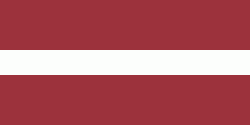Bolderaja
The area was made into a Polish customs post in 1606. The wooden houses built during the Polish era in 1603 may be the oldest in Riga.
Bolderāja was the last district added to the city of Riga in 1924.
Bolderāja was a district consisting mostly of private houses and low rise buildings, but after the 1970s five to nine floor blocks of flats were built by the Soviet government. The population of Bolderāja is largely Russian-speaking.
From time immemorial the inhabitants of the area around the mouth of the Daugava river were renowned for being hard-working and courageous. River mouths were historically key strategic positions. Consequently, many battles were fought with numerous invaders.
Bolderāja is located in the northwest part of Riga city, on the left bank of the Daugava River and about 2 km away from the Gulf of Riga.
Bolderāja is surrounded by water. From the south-east, the Hapaka Ditch (Hapaka grāvis), from the east, the Daugava River, from the north, the Loču Canal (Loču kanāls), and from the west, north-west, the Buļļupe ("Bull River").
There are also two noteworthy islands. North of the district is Mīlestības saliņa ("Love Island") the name of which originates from the previous existence of military bases and as a result many children were conceived in this area. East of the district is Krievu sala ("Russian Island"), which is actually a peninsula.
Map - Bolderaja
Map
Country - Latvia
 |
 |
| Flag of Latvia | |
After centuries of Teutonic, Swedish, Polish-Lithuanian and Russian rule, which was mainly executed by the local Baltic German aristocracy, the independent Republic of Latvia was established on 18 November 1918 when it broke away from the German Empire and declared independence in the aftermath of World War I. However, by the 1930s the country became increasingly autocratic after the coup in 1934 establishing an authoritarian regime under Kārlis Ulmanis. The country's de facto independence was interrupted at the outset of World War II, beginning with Latvia's forcible incorporation into the Soviet Union, followed by the invasion and occupation by Nazi Germany in 1941, and the re-occupation by the Soviets in 1944 to form the Latvian SSR for the next 45 years. As a result of extensive immigration during the Soviet occupation, ethnic Russians became the most prominent minority in the country, now constituting nearly a quarter of the population. The peaceful Singing Revolution started in 1987, and ended with the restoration of de facto independence on 21 August 1991. Since then, Latvia has been a democratic unitary parliamentary republic.
Currency / Language
| ISO | Currency | Symbol | Significant figures |
|---|---|---|---|
| EUR | Euro | € | 2 |
| ISO | Language |
|---|---|
| LV | Latvian language |
| LT | Lithuanian language |
| RU | Russian language |















